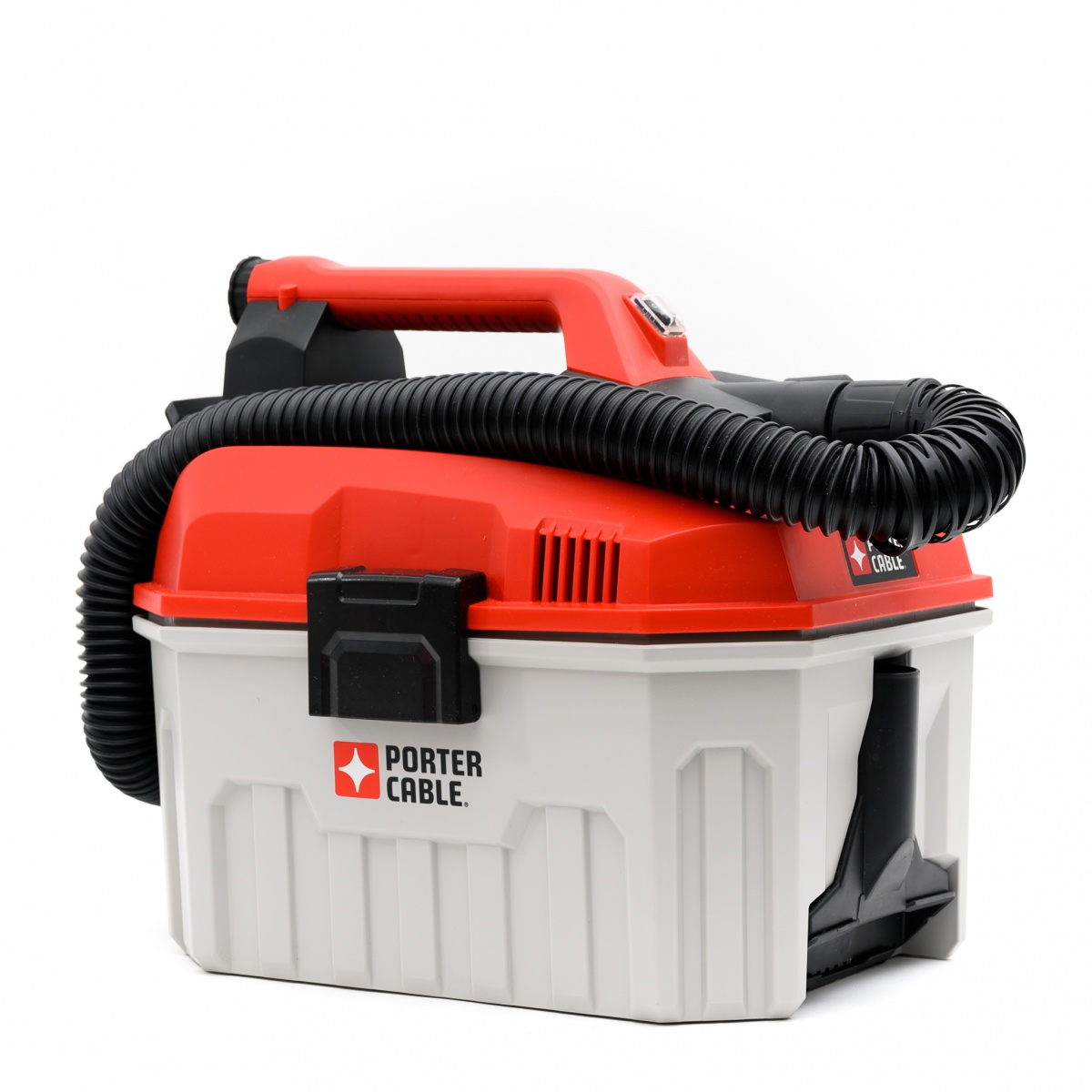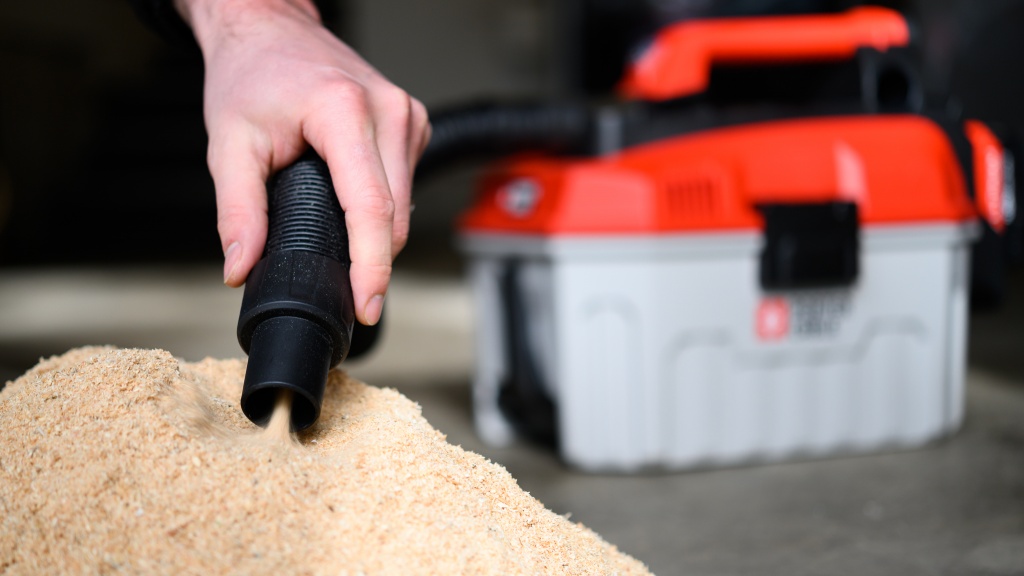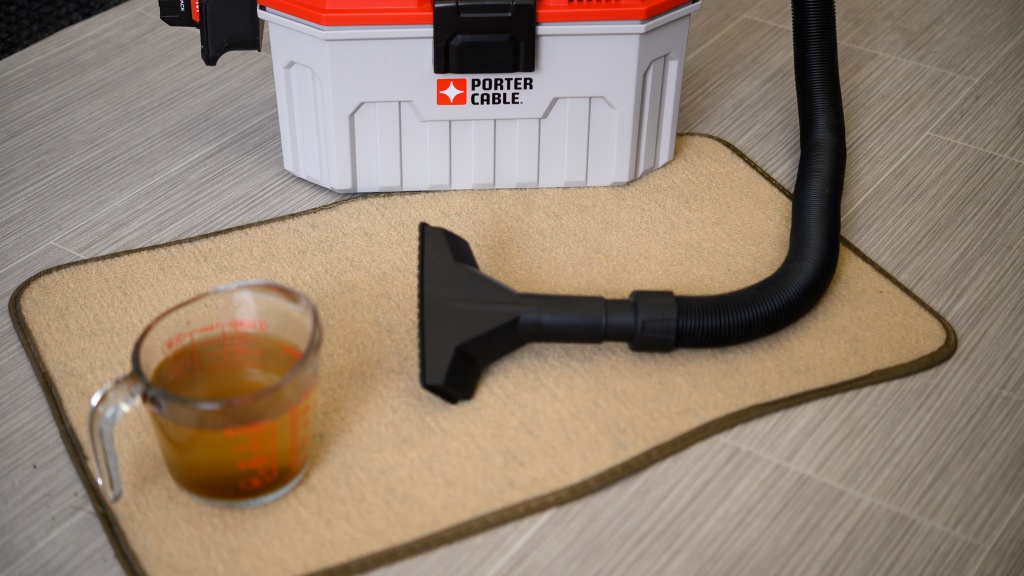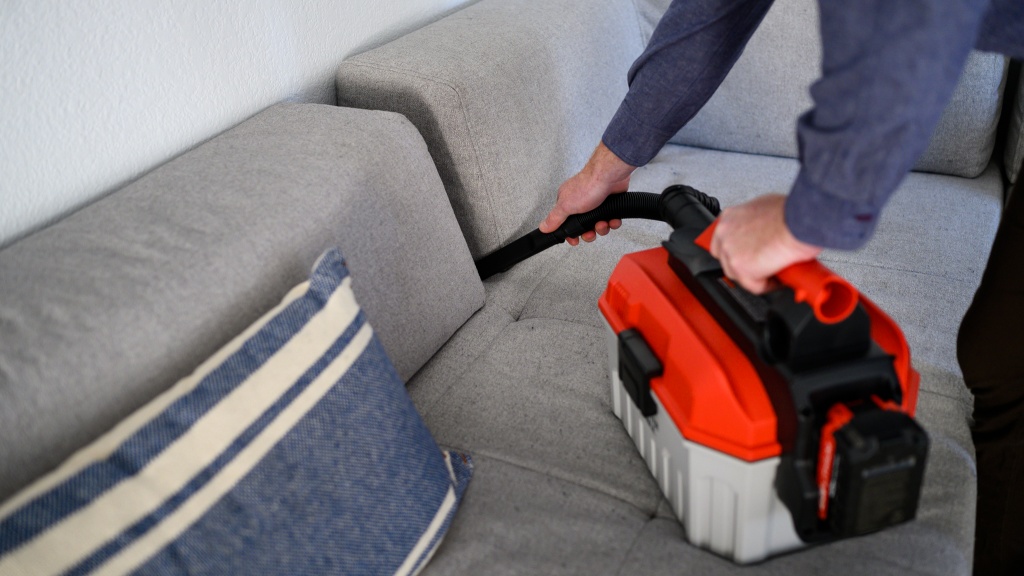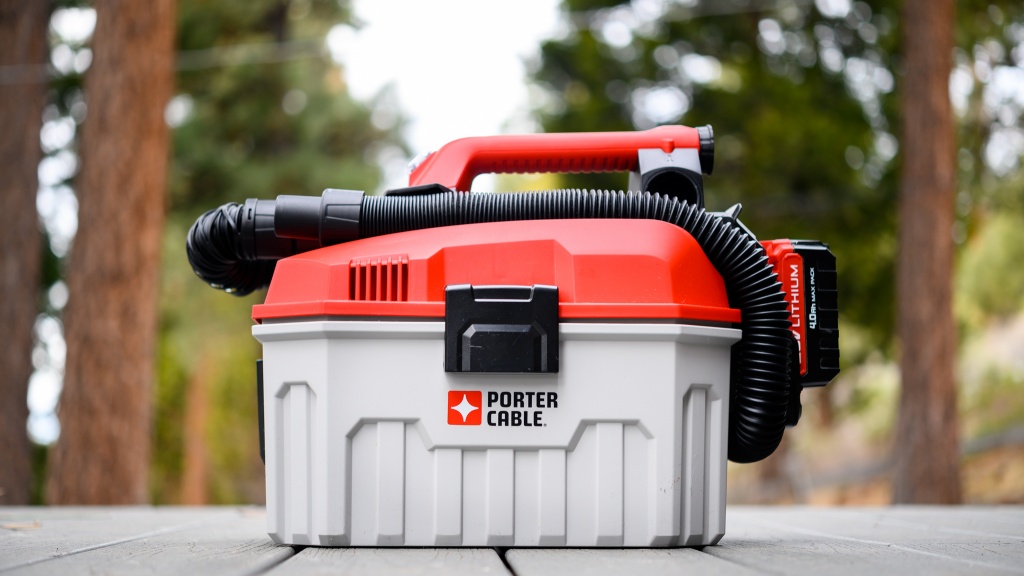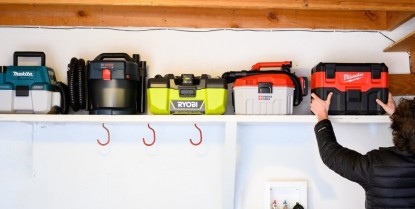Porter-Cable PCC795BR Review
Our Verdict
Our Analysis and Test Results
The Porter-Cable stands out in the class for its superior battery life, outcompeting more expensive models as well as those with greater amp-hour ratings. While the battery life is this vacuum's most notable feature to be sure, it earned solid marks across the board. Our chief complaint about this machine is that the attachments and hose are stored externally, and the handle is fixed. Thus, the machine has an awkward shape that poses problems to storing and stacking. That said, this model offers one heck of a deal for those that want a prolonged runtime.
Dry Work
The Porter-Cable delivered a middle-of-the-road performance in the dry work evaluation. However, it showed up in the heavy debris test. This machine moved machine nuts and bolts, washer and carriage bolts, even a 100-gram weight with authority. However, it refused to sweep up lag screws — a quark observed in other machines as well.
The PCC795BR made a good showing in the loose debris assessment where the machine was tasked with picking up 9 cups of sawdust. The vac came in at 14 secs, which is faster than average for the class. However, the model showed some signs of struggle in meeting this demand, and that brought down its score. Finally, the Porter-Cable had mixed results in our crevice evaluation. While the crevice attachment is a bit stubby for the class — managing only 6 ¾ inches of penetration in our test — the suction issuing from the end of the tool had ⅝ inch of reach. While it might seem insignificant, that kind of reach is quite respectable, and is matched by the Craftsman CMCV002B, Ridgid WD0319, and just a few others.
Wet Work
Wet tasks are more demanding for these machines. As such, we want to know which ones can handle the work. The Porter-Cable earned an average score overall in this metric. However, this machine had high and low points in the individual sub-metrics.
The water suction test, which consists of moving 2 gallons of water uphill, showed this vac to be slightly below the 13.5-second class average, coming in at 16 seconds. As for the wet sawdust hoovering challenge, the PCC795BR drew up the 9 cups of soggy sawdust in 50 seconds. Again, just under the class average of 43 seconds. Additionally, the hose showed some internal issues with sawdust beginning to stick that could become problematic if the task had been prolonged.
The Porter-Cable turned a corner in the puddle on a hard surface test. In this assessment, we pour 3 cups of water onto a linoleum floor and, using the vacuum's floor attachment, we time how long it takes to slurp up the fluid. As it turns out, this machine is a boss at cleaning up spills! In large part, this is a result of the floor attachment design, which keeps the air moving with channels on its leading edge. Building on this performance, the PCC795BR knocked the ball out of the park on the saturated carpet test by removing almost 2 cups of water — the total amount poured on the carpet to saturate it in the first place. While it looked like the vac was going to finish on a high note, it tanked in the suction test coming in well below average with just 20 inches of water lift registering on our gauge.
Battery
While one can make a strong argument that the battery assessment is the most important in the review process, it is not a complicated one. We take a fully charged battery and plug it into the vacuum. We then turn the machine on and let it suck air until the battery dies. That's it. The time elapsed is called the runtime. As all batteries are not created equal, we divide the runtime by the battery's amp-hour rating. With this number, we can make apples-to-apples comparisons between the different models.
The Porter-Cable is a titan in this metric with a 34 minute run time. As for runtime per amp-hour, this machine beats the competition like a dusty rug with 8.5 minutes per amp-hour. To put that into context, the average for the group was 5.7 minutes per amp-hour.
Convenience
We all like conveniences, right? So, why not have a tool that makes cleaning easier and more convenient. The Porter-Cable fairs well in this metric, but it's no superstar. To assess the vacs for their ease of use, we look at several features. The first storage of the machine. While this model has below average dimensions — a definite plus for many — it is awkwardly shaped. As a result, storage can be challenging if you want to stack it on a shelf, unlike the tidy and compact Milwaukee.
Respiratory health is also a focus. Accordingly, we check up on the filter that the machine is packing. Unfortunately, this model lacks a HEPA-rated filter that is designed to capture many insidious particulates that will pass through lesser devices. However, the Porter-Cable does have an above-average length hose that stretches from 26 to 94 inches — the average is 86 inches. Moreover, the hose is easy to stretch, unlike some of the competition. Finally, this vac's small size is complemented by its relatively light 7 lbs, 3 oz.
Should You Buy the Porter-Cable PCC795BR?
If you are in the market for a relatively lightweight vacuum with excellent battery life, then the Porter-Cable is a great option that will be useful for larger surface area cleanups. Unfortunately, the trade-off is having just average performance in wet and dry suction. But if you prefer endurance over robust power, this could be the vacuum for you.
What Other Cordless Wet Dry Vacuums Should You Consider?
If the lighter weight is what drew you to the Porter-Cable, then you might want to check out the Craftsman CMCV002B. It is just a few ounces heavier and performs better in both wet and dry metrics, while also maintaining an impressive run time. If you need something that has a little more suction power to tackle bigger and heavier messes, the Ryobi P3240 earned top marks for wet and dry work but lost some points for having a shorter battery life.


